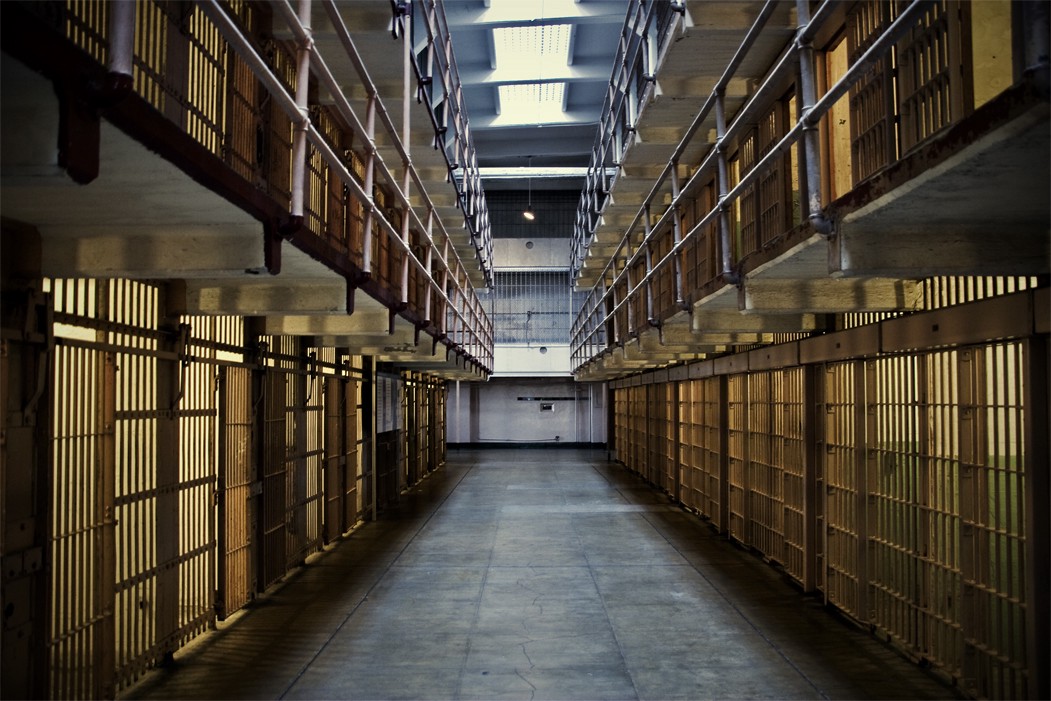

While the 170-year-old Clinton Correctional Facility–where two convicts recently drilled out of their cells and passed through an underground steam pipe to the other side of a concrete wall–may be undergoing constant renovations, the largest maximum security prison in New York State hasn’t yet joined the judicial, tech arms race. Innovations inside the world’s newest lockdown facilities offer formidable physical design, radio-frequency inmate tracking, and omnipresent surveillance that make escape nearly impossible.
These super high-tech securities surely would have prevented the breakout by Richard Matt and David Sweat–and yet, maybe it’s only a matter of time before they’re hacked through, too.

1) The only (known) way is up
Clinton Correctional Facility is massive and disconnected, its main building and annex separated by sprawling distances that don’t allow for full camera surveillance. While other brigs built around the same time used Panopticon principles involving circular constructions so staff could see all cells from a central control, Matt and Sweat had enough privacy to bore themselves out.
Compare this to the meticulously modern design of ADX Florence in Colorado, a Supermax built in 1994 that houses the United States’ most dangerous criminals. Once inside, disorientation reigns supreme, as there’s no way of knowing north from east or west. Inside cells, ceiling-window slits measuring 4 feet by 4 inches face upward to the sky; outside, recreation in a concrete pit similarly makes understanding your location to map an escape virtually impossible. While the prison’s blueprint is severe, likely too much so for a place like Clinton, senior counsel for Human Rights Watch Jamie Fellner is on record as saying, “The Bureau of Prisons has taken a harsh punitive model and implemented it as well as anybody I know.”

2) Track me here, track me there
Clinton is no Supermax, but as early as 2002 prisons of its ilk introduced pilot programs using radio-frequency identification tags to track prisoners. RFID is not a new technology–it hit the commercial market in the 1970s following automobiles to market and now enables mobile payments. In prisons, transmitters inside wristbands ping a central database that records an inmate’s location every two seconds. If the band is tampered with, cut, or otherwise removed, an alarm triggers a central monitoring station.
The gadgetry is probably not fail-safe, though. A simple Google search reveals that some RFID tags can be destroyed with a standard microwave, and there’s always the possibility for hacking and cloning them with off-the-shelf components–it’s already been done with electronic identifiers in U.S. passports.
Still, facilities from California to Michigan to Virginia say one benefit of RFID tags, whose installation costs anywhere from $1 to $3 million, is the ability to keep certain inmates apart and monitor impromptu gatherings. A 2014 report from the Correctional Association of New York found Clinton highly vulnerable to inmate rioting, due in most part to racial tensions and a population of which 91 percent has been convicted of violent felonies. (It’s been reported that an incident a few days prior to Matt’s and Sweat’s escape and subsequent lockdown may have offered ample noise and distraction to aid their plan.)

3) Robo-wardens
Forget the concept of living under lock and key. Some of the most sophisticated prisons are controlled entirely by computers. Inside the Souza-Baranowski Correctional Center (SBCC) in Massachusetts, 42 graphic-interfaced computer terminals control a keyless security system with 1,705 doors, vehicle gates, lights, and water–all running almost exclusively on solar and hydroelectric power.
The Detention Concept Lelystad in the Netherlands, dubbed “the big brother” prison when it opened in 2006, is a high-tech jail for low-risk prisoners. In-cell touchscreen computers allow prisoners to schedule their daily activities and emotion-recognition software monitors conversations in real time to predict any sort of escalation.

4) Biometrics
Biometrics includes any number of technologies for authenticating a person’s identity by analyzing the human body. In 2006, the National Institute of Justice (NIJ) tested the use of biometric checkpoints in a South Carolina naval brig that scanned an inmate’s face or irises to grant authorization to different areas of the facility–and sounded an alarm when a prisoner took more than five minutes to reach the intended destination. While the NIJ noted that biometrics is costly and not without its inaccuracies (facial recognition produced too many false positives and in another documented case opened the wrong cell door), it reduced the necessity for guard escorts.
Meanwhile, in the Southern Queensland Correctional Precinct biological measurements are key to verifying that everyone entering and moving about the prison is who they say they are. When the facility opened in 2012, it introduced vibration sensors so exact that they can detect an unregistered heartbeat within incoming or outgoing vehicles.

5) Always watching
Unfortunately, there isn’t video footage of the recent Clinton escape. But that wouldn’t be the case in newer prisons where cameras are bulletproof and able to withstand blunt force. Inside Massachusetts’s SBCC, a matrix of 366 cameras records and archives prison activity 24 hours a day–so essentially, the whole place is DVRed.
Closed-circuit TV also now removes much of the need to transport inmates outside of jails and prisons. Video conferencing allows inmates to appear in court remotely and offers virtual medical checkups from doctors through telemedicine programs, the most well known of which was piloted at The University of Texas Medical Branch.

6) Blocking the newest contraband
It’s quite possible that as far as joint contraband goes, cell phones are more coveted than heroin. While prisoners have been known to swap the identifying security PINs they’re assigned for pay phone calls to make tracking illicit contact with those outside harder (voice biometrics could eradicate this problem), secret cell phones are another issue altogether. In 2009, the U.S. Senate passed the Safe Prisons Communications Act, which allows prisons to jam cell phone signals in their vicinity. However, after wireless carriers fought the coverage blockages, installing jamming devices now requires a petition to the FCC.


How We Get To Next was a magazine that explored the future of science, technology, and culture from 2014 to 2019. This article is part of our Metropolis section, on the way cities influence new ideas–and how new ideas change city life. Click the logo to read more.
